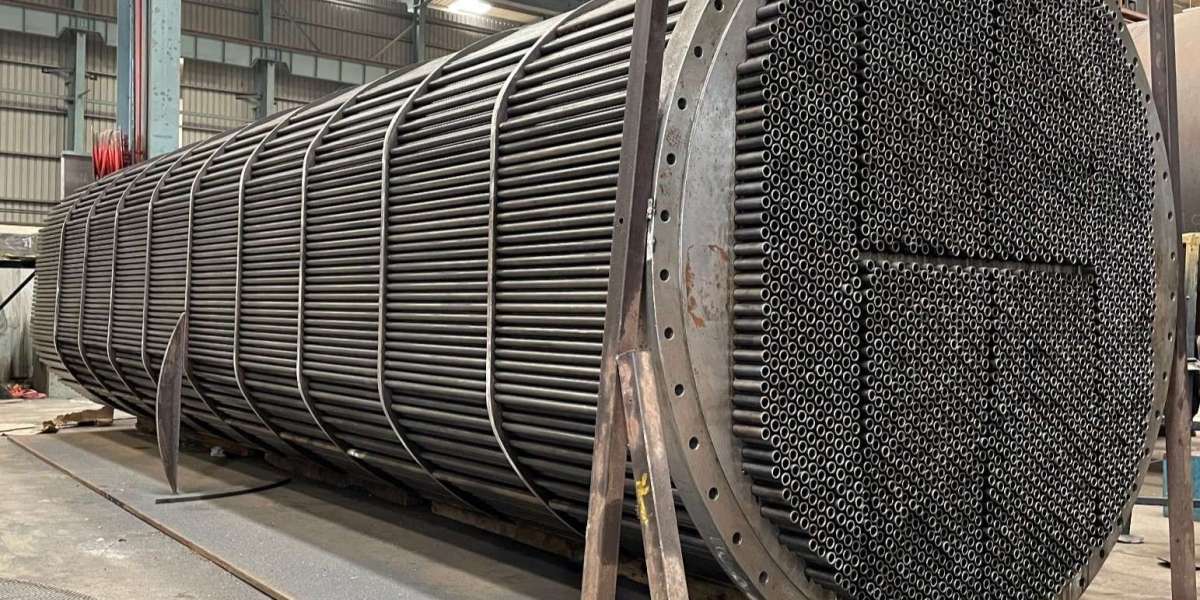A heat exchanger is a device designed to transfer heat between two or more fluids without mixing them. These fluids can be gases, liquids, or a combination of both, and the process is widely used in industries where heating or cooling is essential.
Heat exchangers are fundamental components in systems such as power plants, HVAC units, refrigeration, chemical processing, and automotive engines.
Their primary role is to improve energy efficiency by utilizing existing thermal energy instead of producing it from scratch.
How a Heat Exchanger Works
The working principle of a heat exchanger is straightforward: it allows heat to flow from a hotter fluid to a cooler one across a solid barrier, usually made of metal with high thermal conductivity.
For example, in a car radiator, hot coolant from the engine flows through metal tubes, while outside air passes over the tubes. The heat is transferred to the air, cooling the liquid inside without direct contact between the two fluids.
The efficiency of a heat exchanger depends on several factors:
The surface area available for heat transfer
The temperature difference between fluids
The thermal conductivity of the material
The flow arrangement of fluids
Types of Heat Exchangers
There are several types of heat exchangers, each suited to specific applications:
Shell and Tube Heat Exchanger
This is one of the most common designs, featuring a bundle of tubes enclosed within a cylindrical shell. One fluid flows through the tubes, while the other moves around them inside the shell. These exchangers are widely used in oil refineries and power plants due to their durability and efficiency.
Plate Heat Exchanger
Composed of multiple thin, corrugated plates stacked together, plate exchangers provide a large surface area for heat transfer. They are compact and efficient, commonly used in food processing, HVAC systems, and chemical industries.
Air Cooled Heat Exchanger
Instead of using water, this design relies on air to remove heat from the working fluid. Large fans blow air over finned tubes carrying the hot fluid. They are ideal for areas with limited water supply and are common in gas processing plants.
Double Pipe Heat Exchanger
Simple in design, this type involves one pipe placed inside another. One fluid flows through the inner pipe, while the second fluid circulates through the outer pipe. It is best suited for small-scale applications.
Regenerative Heat Exchanger
In this type, the same surface is alternately exposed to hot and cold fluids, temporarily storing heat before releasing it to the cooler medium. These are often used in gas turbine and power generation systems.
Applications of Heat Exchangers
Heat exchangers are indispensable across industries due to their versatility and energy-saving potential:
Automotive Industry: Used in radiators, oil coolers, and air conditioning systems to regulate temperatures.
HVAC Systems: Provide heating, cooling, and ventilation in residential and commercial buildings.
Power Plants: Facilitate energy transfer in steam turbines and condensers, improving efficiency.
Food and Beverage Industry: Maintain proper temperature in processes such as pasteurization and fermentation.
Chemical Industry: Enable controlled heating or cooling of process fluids.
Renewable Energy: Applied in solar water heaters and geothermal systems to transfer natural heat into usable energy.
Importance of Heat Exchangers
The role of heat exchangers extends beyond simple temperature regulation. They:
Improve energy efficiency by recycling waste heat
Enhance sustainability by reducing fuel consumption
Lower operating costs in industries
Ensure safety by controlling overheating in systems
Result
A heat exchanger is a cornerstone of modern engineering and energy management. From keeping car engines cool to optimizing power generation, these devices are essential for efficient heat transfer.
With ongoing technological advancements, heat exchangers are becoming more compact, durable, and eco-friendly, ensuring their continued importance in both industrial and everyday applications.







